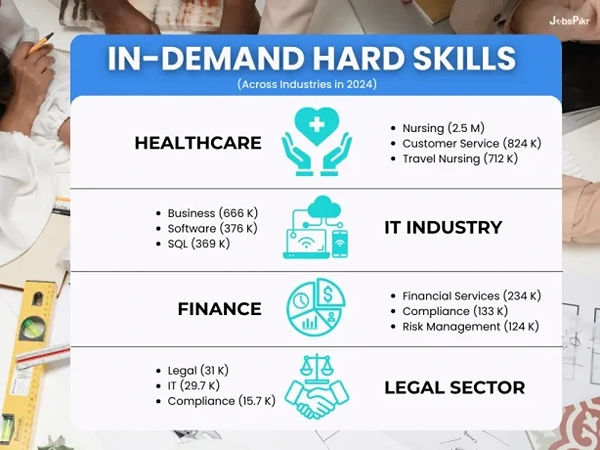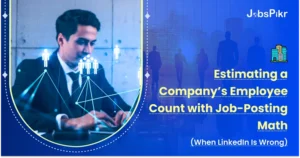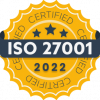- The Skills Gap: Why It’s An Issue and What Companies Like Microsoft Are Doing About It
- Rethinking the Talent Search: Microsoft’s Push for Inclusive Hiring
- Skilling Up Millions: Inside Microsoft’s Global Training Engine
- Cloud-Ready, Not Just Cloud-Curious: Training for Real Jobs
- Who Wins? The Surprising Reach of Microsoft’s Strategy
- What’s Next? This Isn’t a One-Time Fix
- Your Turn: What This Means for Your Path
- Laying Foundations for a More Equitable Tech Future
- Frequently Asked Questions
You know that feeling when technology seems to leap forward overnight? It’s exciting, sure, but it leaves a lot of us – businesses and workers alike – scrambling to keep up. That scramble has a name: the skills gap. Companies desperately need people with the right skillset (as seen by TCS’ recent layoffs), and stagnant or outdated skills don’t meet the cut. That’s what Microsoft understands.
Microsoft pledged a few years ago to equip 25 million people with digital skills by 2025, this year. That was a real signal that Microsoft was changing its whole mindset about its role in the workforce. Their game plan boils down to two powerful ideas:
- Looking beyond the usual resumes with truly inclusive hiring.
- Building practical skill development programs that actually prepare people for real-world jobs, especially in the cloud.

Image Source: Transform Partner
The Skills Gap: Why It’s An Issue and What Companies Like Microsoft Are Doing About It
The skills gap is more than a passing trend; it’s affecting companies everywhere due to the rapid advancement in technology and AI, changing the way things are usually done.
Why? Because tech – especially stuff like cloud computing, AI, cybersecurity, and data analytics – is sprinting ahead faster than ever. Companies desperately need people who can keep up, but there just aren’t enough skilled folks ready to jump in.

Image Source: JobsPikr AI-Powered Skill Mapping
And here’s the kicker: The World Economic Forum’s Future of Jobs Report 2023 puts a scary number on it: By 2027, technology will disrupt the core skills of 44% of workers. That means nearly half of us will need to learn significant new skills, and fast. That’s a massive shift.
The real hitch? Old-school hiring habits make it worse. Focusing only on specific degrees or years in a hyper-specific role? That misses a ton of capable people. Think about the self-taught coder, the career switcher, the veteran transitioning out, or someone from a group rarely seen in tech. Their path looks different, but their potential is huge. Clinging to that old resume checklist doesn’t just widen the skills gap – it starves companies of the fresh thinking that drives real innovation. Microsoft got it: fixing this meant overhauling both how people learn and who even gets a shot.
Rethinking the Talent Search: Microsoft’s Push for Inclusive Hiring
Microsoft realized finding the right people meant throwing out the old rulebook. Their inclusive hiring push actively dismantles roadblocks that keep individuals from growing.
- Skills over Education: The interviews for Microsoft focus more on actual skillset and abilities and how people solve problems, not just the name on your degree.
- Training the Gatekeepers: They’ve poured resources into teaching their own recruiters and hiring managers how to spot potential, fight unconscious bias, and see the whole candidate.
- Looking in New Places: You’ll find them actively scouting talent from community colleges, coding bootcamps, and grads of their own skill development programs.
Crucially, they don’t just talk about it – they build bridges. Take their Neurodiversity Hiring Program, or the Leap Apprenticeship Program, designed for people breaking into tech from totally different fields.
Often, this leads straight to jobs at Microsoft or its partners. This commitment does more than just create a workforce that mirrors the real world; it uncovers a goldmine of overlooked talent ready to fill those critical skill gaps.
Skilling Up Millions: Inside Microsoft’s Global Training Engine

Image Source: JobsPIkr Insights In-Demand Skills
Finding existing talent is one thing, but Microsoft knew that truly closing the skills gap meant empowering millions more to gain the needed skills. That’s the driving force behind their Global Skills Initiative, launched in 2020, now part of broader efforts like Microsoft Skills for Jobs. The goal? Help 25 million people worldwide by 2025. How are they pulling this off? Through accessible, practical learning.
- LinkedIn Learning Power: One major move was unlocking free access to relevant learning paths on LinkedIn Learning (which Microsoft owns). This gave instant, massive reach to courses on hot jobs like software development, data analysis, and cybersecurity.
- Hands-On Coding with GitHub: Knowing that developers learn by doing, they offered free access to GitHub Learning Lab. This lets people get interactive coding practice right where they’d actually work.
- Microsoft Learn: The Core Hub: The real engine is Microsoft Learn. This free, online platform is packed with interactive, job-focused learning paths. The magic? It hooks directly into Azure. Learners can practice real cloud skills without needing their own expensive setup. Completing paths often earns valuable Microsoft certifications – a real badge of competence.
- Teamwork Makes it Work: Hitting 25 million needs partners. Microsoft works with governments, nonprofits, community colleges, and job agencies globally. These local partners help tailor training, offer support (like career advice), and connect learners to actual jobs. Partnerships with groups like NPower, for example, focus on getting training to underserved young adults and veterans.
It’s not just about hard tech skills either. Many paths include crucial “soft skills” like clear communication and teamwork – the kind of stuff you need to succeed anywhere. This well-rounded approach aims for true job readiness.
Cloud-Ready, Not Just Cloud-Curious: Training for Real Jobs
A huge chunk of the roles Microsoft targets involve cloud computing, especially their Azure platform. Their training shines because it cuts through the complexity with role-based training. Forget vague “introduction to cloud” courses.
Microsoft Learn zeroes in on specific, real-world jobs:
- Azure Administrator
- Azure Developer
- Azure Solutions Architect
- Azure Data Scientist
- Azure Security Engineer
- Power Platform Developer
Each path teaches exactly what someone in that job does day-to-day. It’s practical from the get-go. Modules mix clear explanations, safe sandbox environments for hands-on tinkering, and quick checks to make sure it’s sinking in.
The big payoff for learners? Those Microsoft certifications. Getting certified – like the Azure Fundamentals (AZ-900), Azure Administrator Associate (AZ-104), or Azure Developer Associate (AZ-204) – is like shouting “I know my stuff!” to employers everywhere. These certs are serious currency in the industry, often listed right in job ads. For someone without a traditional degree, it’s a powerful way to prove they’ve bridged their own skill gaps and are genuinely “cloud-ready.”
This whole “learn by doing, then prove it” approach, tightly linked to the actual tools (Azure), is what makes Microsoft’s skill development so effective. It’s training built for the real world.
Who Wins? The Surprising Reach of Microsoft’s Strategy
Microsoft’s two-pronged attack isn’t just charity; it’s smart business that benefits way more than just them. It creates a positive ripple effect.
For People Looking for Opportunity:
- Lowering Walls: Free or very affordable online learning smashes financial and location barriers.
- Skills That Matter: Role-based training and certifications teach exactly what employers want, seriously boosting job chances.
- Proof in the Pudding: Microsoft certifications give a trusted, industry-standard way to show you’ve got the goods, building real confidence.
For Businesses (Microsoft Included):
- Bigger Talent Pond: Inclusive hiring plus massive skill development means way more qualified candidates to choose from.
- Fills Those Critical Shortages Head-On: Look, it directly tackles the talent shortages, giving everyone headaches – especially in crucial areas like cloud and AI. Instead of just complaining about the gap, this strategy actually starts filling it with qualified people.
- Sparks Real Innovation (Seriously!): Bringing in people from different walks of life? That’s not just a feel-good move. It genuinely sparks better ideas and smarter ways to solve problems. Fresh perspectives really do lead to fresher solutions.
- New Hires Hit the Ground Faster: And the best part? When you hire folks whose skills are already validated and up-to-date, they get productive way quicker. You’re not spending months getting them up to speed on the basics – they can contribute almost immediately.
- Growing the Ecosystem: More skilled people fluent in Microsoft tech (like Azure) means more innovation and adoption everywhere. A study by IDC for Microsoft (2022) pointed out that just Microsoft partners alone could rake in over $1 trillion in the next few years* – and that relies heavily on having enough skilled people.
For Everyone Else (Economy & Society):
- Stronger Growth: Closing skill gaps means more productivity and innovation across the board.
- Fairer Chances: Opens up economic opportunities for groups often left behind.
- Getting Future-Ready: Helps the workforce adapt as digital transformation keeps accelerating.
What’s Next? This Isn’t a One-Time Fix
The tech world doesn’t freeze. Microsoft knows solving today’s skills gap is essential, but it’s not the finish line. New waves, like generative AI, are already creating new demands.
So, their work continues beyond the 25 million target. The focus now includes:
- Lifelong Learning: Making constant skill updates normal. Microsoft Learn keeps adding new stuff on emerging tech.
- AI for Everyone: Baking AI skills into more training paths, so people can use tools like Microsoft Copilot well and wisely.
- Reaching Further: Working harder to break down barriers through local partners and accessible formats.
- Tracking Real Results: Looking beyond training numbers to see how many people actually land jobs and build careers.
The core idea stays strong: inclusive hiring plus accessible, relevant skill development builds a stronger, fairer workforce.
Your Turn: What This Means for Your Path
So, what does Microsoft’s huge effort mean for you, whether you’re looking to boost your career or solve hiring headaches in your business?
If you’re building skills or changing lanes:
- Check out Microsoft Learn: Seriously, it’s a goldmine of free, quality training. Start small or dive into a specific job path. It’s right there waiting.
- Think About a Certification: Earning a Microsoft cert is a solid way to prove your skills globally. It makes your resume stand out.
- Seek Out Forward-Thinking Employers: Look for companies, Microsoft included, that value skills and practice inclusive hiring. Your journey and what you can do matter most.
If you hire people or run a team:
- Scrutinize Your Hiring: Look at your job ads and interview process. Are you stuck on degrees and old-school experience, or focused on demonstrable skills and potential? Make skills-based hiring your mantra.
- Upskill Your Crew: Invest in training your current team using resources like Microsoft Learn. It keeps people engaged and fills skill gaps from within.
- Champion Diversity: Actively look for talent from different paths. Support programs that build diverse pipelines.
Laying Foundations for a More Equitable Tech Future
The global skills gap is daunting, but Microsoft is showing it’s not unbeatable. They’re proving large-scale change is possible through a powerful combo: a deep commitment to inclusive hiring that seeks out diverse potential, paired with massive, accessible skill development programs that create clear paths to in-demand cloud jobs.
By making top-notch training free or low-cost, focusing ruthlessly on practical, job-specific learning with real tools, and offering respected certifications, they’re empowering millions. By redesigning hiring to focus on skills first, they’re making sure that new talent finds its place.
If you liked this article, read –
Inflation Under Trump: Did It Drive Job Growth or Wage Stagnation?
US Labor Market Trends: Job Openings vs. Job Cuts in 2025
US Labor Market Industry Report: Where Open Jobs Outnumber Workers
Frequently Asked Questions
What is an example of a skill gap?
An example of a skill gap is when a company hires a new marketing associate who understands basic social media platforms but lacks experience with data analytics tools like Google Analytics or HubSpot. While they can manage content, they struggle to measure campaign effectiveness, highlighting a gap between what the role demands and what the individual currently knows.
Skill gaps can occur at any level—from entry-level roles to executive positions—and often relate to evolving technology, industry standards, or new job responsibilities.
What are three skill gaps?
Here are three common types of skill gaps seen across industries:
- Digital Literacy Gap – Employees may lack knowledge of modern tools or platforms, such as CRM systems, data analytics, or automation software.
- Soft Skills Gap – Skills like communication, leadership, teamwork, and emotional intelligence may be underdeveloped, even in technically skilled professionals.
- Critical Thinking & Problem-Solving Gap – In some roles, especially in fast-paced or innovation-driven industries, employees may struggle to think independently, assess risks, or find creative solutions.
These gaps can affect productivity, innovation, and overall team effectiveness.
How do I identify my skill gaps?
To identify your own skill gaps:
Use assessments or tools – Online skill assessments or personality tests (like StrengthsFinder or LinkedIn Skill Assessments) can help pinpoint gaps.
Compare your skills to job requirements – Look at job listings for your current or desired role and see what skills you’re missing.
Ask for feedback – Supervisors, mentors, or colleagues can often point out areas for improvement you might not notice yourself.
Self-assess – Reflect on tasks you avoid, struggle with, or delegate often—these might signal a lack of confidence or capability.
What is the skills gap theory?
The skills gap theory refers to the concept that there is a disconnect between the skills that employers need and the skills that workers currently possess. According to this theory, labor markets may have plenty of available jobs and willing workers, but many roles go unfilled because candidates lack the specific qualifications or expertise required.
This theory is used to explain issues like:
- Talent shortages in fields like tech, healthcare, or engineering
- The need for upskilling and reskilling
- Education systems are not aligning with workforce demands
Critics argue that some so-called “skill gaps” are actually due to mismatched job expectations or underinvestment in employee training.




